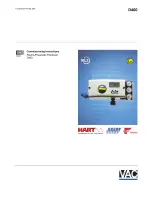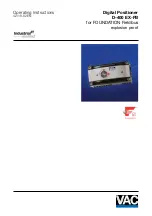
Instruction Manual
D101728X012
3710 and 3720 Positioners
September 2017
29
D
Vent the actuator loading pressure.
D
Use lock‐out procedures to be sure that the above measures stay in effect while you work on the equipment.
D
Check with your process or safety engineer for any additional measures that must be taken to prevent against process
media.
Single‐Acting/Double‐Acting
See figure 21 for positioner output connections. See figure 23 for the positioner schematic.
Figure 21. Output Connections
A6056
OUTPUT CONNECTIONS
TOP VIEW
Use 3/8‐inch tubing between the positioner and actuator.
D
For single‐acting output, plug positioner OUTPUT A. Refer to the actuator instruction manual for the specific
connection for positioner OUTPUT B. Connect positioner OUTPUT B to the actuator connection for single‐acting.
For Fisher diaphragm actuators, this connection is known as the diaphragm casing connection.
D
For double‐acting output (with direct‐action), refer to the actuator instruction manual for the specific
connections for positioner OUTPUT A and B. Connect positioner OUTPUT A to the actuator cylinder connection
where actuator air pressure is exhausted during the initial actuator stroke. Connect positioner OUTPUT B to the
actuator cylinder connection where supply pressure enters the actuator during the initial actuator stroke. For
Fisher piston actuators, OUTPUT A connects to the lower actuator cylinder connection and OUTPUT B connects
to the upper actuator cylinder connection.
Direct‐Acting/Reverse‐Acting
This section explains changing the positioner action from direct to reverse or reverse to direct. With direct‐action, the
actuator stem extends as the input signal to the positioner increases. With reverse‐action, the actuator stem retracts
as the input signal to the positioner increases.
































